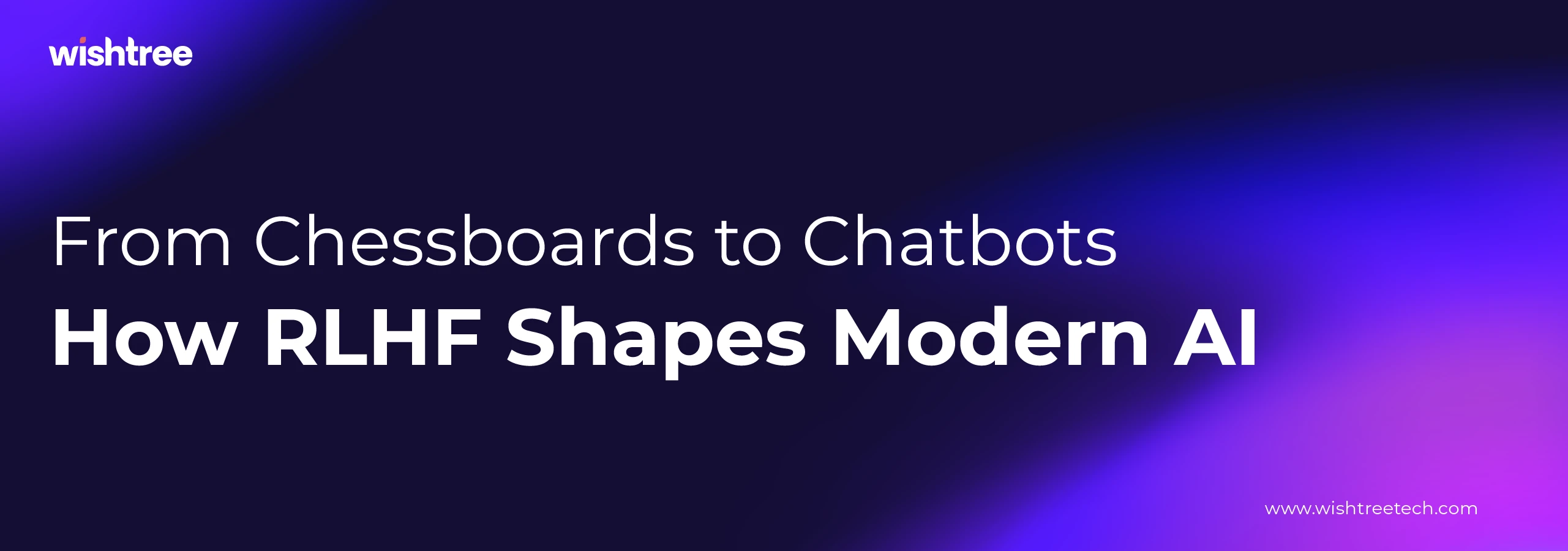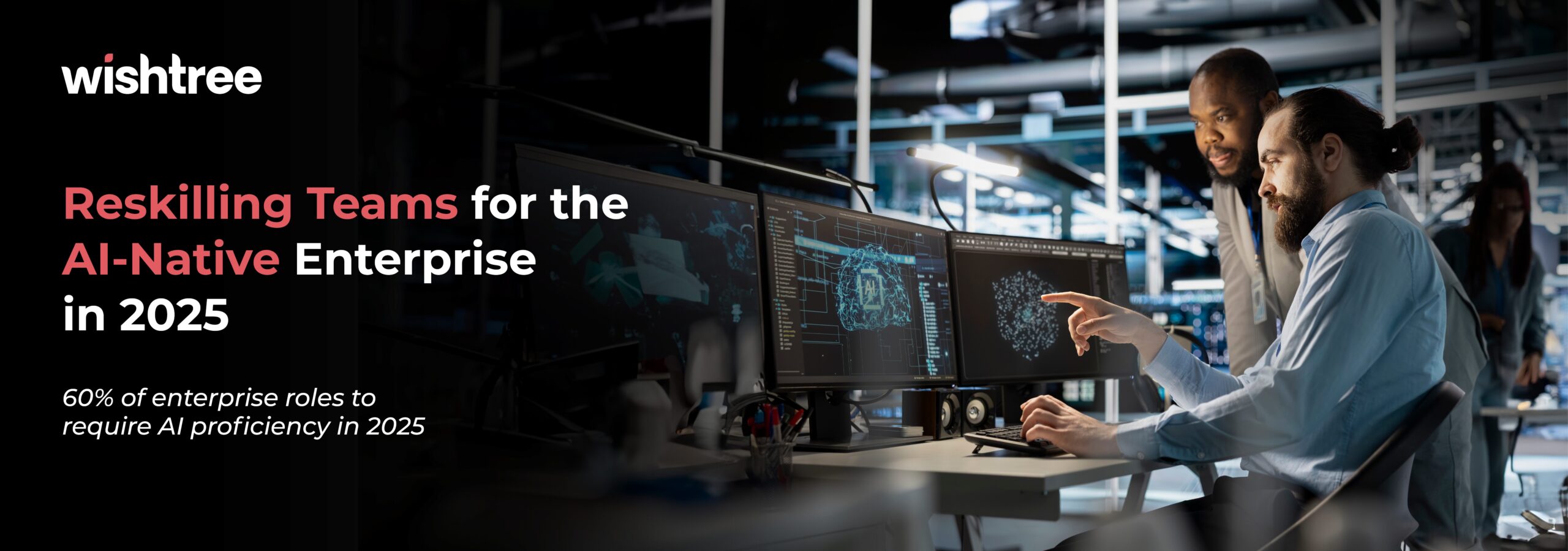Table of Contents
Say you are facing a new opponent on the chessboard without the guidance of a seasoned grandmaster. The lack of experience can make strategic decision-making a daunting challenge.
This is similar to the early stages of AI development, where models often struggle to make optimal decisions due to limited data or understanding.
Reinforcement Learning from Human Feedback (RLHF) is a technique that addresses this challenge by introducing human guidance into the AI training process. Just as a grandmaster provides feedback to a chess player, RLHF involves a human teacher guiding an AI learner to improve its decision-making.
RLHF: The Power of Human Guidance in AI
Reinforcement Learning from Human Feedback (RLHF) is a groundbreaking technique that combines the power of human expertise with machine learning algorithms. RLHF incorporates human guidance to accelerate the training process of reinforcement learning models. This, then, leads to improved performance and decision-making.
Key Benefits of RLHF
- Accelerated Training: RLHF significantly speeds up the training process by leveraging human feedback to direct the learning process.
- Improved Performance: Human guidance helps refine reinforcement learning models. This aids more accurate and effective decision-making.
- Reduced Costs and Risks: By incorporating human expertise, RLHF can reduce the time and resources required to train models. Thus, it saves costs and mitigates risks.
- Enhanced Safety and Ethics: Human feedback can help ensure that AI models align with human values and avoid harmful outcomes.
- Increased User Satisfaction: RLHF enables personalized experiences when it tailors reinforcement learning models to user preferences and feedback.
- Continuous Learning and Adaptation: RLHF allows models to stay current and adapt to changing conditions by incorporating ongoing human feedback.
Real-World Applications of RLHF
- Natural Language Processing: Can be used to improve the quality of AI-generated text by incorporating human feedback on clarity, relevance, and coherence.
- Recommendation Systems: Can help personalize recommendations by considering user preferences and feedback. This results in improved user satisfaction.
- Drug Discovery: Can accelerate the process of drug discovery by guiding AI models towards promising candidates. Therefore, the time and cost of research come down.
- Autonomous Systems: Can be used to train autonomous vehicles or robots to make safe and ethical decisions in complex environments.
Challenges of RLHF
- Quality and Consistency of Human Feedback: Human feedback can vary in quality and consistency. This makes it difficult for AI models to learn accurate and optimal policies.
- Reward Alignment: Aligning human feedback with the desired task reward can be challenging. Human preferences may not always align perfectly with the model’s objective.
- Scaling to Large Action Spaces: Obtaining and processing feedback for RLHF models in domains with large action spaces can be computationally expensive.
- Incorporating Diverse Human Perspectives: Ensuring that RLHF systems account for diverse feedback and avoid biases is crucial for building inclusive and equitable models.
- Undesirable Behaviors: RLHF models may still exhibit unexpected or undesirable behaviors, even with human feedback.
Addressing RLHF Challenges
- AI Assistance: Utilize AI tools to assist with data analysis, feedback collection, and reward engineering.
- Adversarial Training: Train RLHF models to be robust against adversarial attacks. This improves their ability to handle unexpected situations.
- Active Learning: Employ active learning techniques to prioritize feedback on the most informative examples. This reduces the burden on human annotators.
Core Components of RLHF
Understanding the different types of AI agents can help in designing reinforcement learning models that adapt and optimize based on human feedback.
- Agent: The AI agent is the learner in the RLHF process. It interacts with an environment and receives feedback to improve its performance.
- Human Demonstrations: These are examples of desired behavior that the agent observes and learns from. Demonstrations provide a foundation for the agent’s initial understanding.
- Reward Models: Reward models define the goals and objectives of the task. They assign values to different states and actions, guiding the agent’s learning process.
- Inverse Reinforcement Learning (IRL): IRL is a technique that allows the agent to infer the underlying reward function from human demonstrations. The agent can learn the implicit goals and preferences by observing how humans behave.
- Behavior Cloning: This technique enables the agent to imitate the actions demonstrated by humans. The agent observes and reproduces human behavior to acquire basic skills and knowledge.
- Reinforcement Learning (RL): After learning from demonstrations, the agent transitions to RL to further refine its policy. RL involves exploring the environment, taking actions, and receiving feedback to optimize its decision-making.
- Iterative Improvement: RLHF often involves an iterative process where the agent is continuously provided with new demonstrations and feedback. This allows it to refine its policy and improve performance over time.
Human Feedback: The Key to Effective RLHF
Businesses looking to optimize customer interactions can leverage an advanced AI agent platform to enhance automation and provide seamless user experiences. When RLHF incorporates human expertise, it enables AI agents to learn faster. Not only that, it also enables them to make more informed decisions, and align with human values.
Types of Human Feedback
- Demonstration Feedback: Providing examples of desired behavior to guide the agent’s learning.
- Comparison Feedback: Comparing different actions and providing feedback on their relative quality.
- Reward Shaping: Modifying the reward signal to encourage specific behaviors.
- Correction Feedback: Providing feedback when the agent makes mistakes.
- Critique Feedback: Offering qualitative feedback on the agent’s performance.
- Instructive Feedback: Directly instructing the agent on what actions to take.
Methods for Incorporating Human Feedback
- Imitation Learning: Learning from human demonstrations, as used by Brett Adcock and his company for warehouse robots.
- Inverse Reinforcement Learning (IRL): Inferring the underlying reward function from human demonstrations, as explored by Halperin, Liu, and Zhang for investment strategies.
- Active Learning from Demonstrations (ALfD): Allowing the agent to actively request demonstrations for specific situations, as used in image restoration.
- Human-in-the-Loop Reinforcement Learning (HITL RL): Providing real-time feedback and corrections to the agent, as demonstrated by Amazon Augment AI.
A well-implemented AI agent platform can further improve customer experience by personalizing AI interactions using real-time human feedback.
RLHF Process: Step-by-Step Breakdown
Task Definition and Reward Function:
- Define the Task: Clearly specify the desired behavior or goal for the AI agent.
- Specify Rewards: Determine the reward function that will be used to evaluate the agent’s actions.
Demonstration Collection and Preprocessing:
- Gather Demonstrations: Collect expert demonstrations of the task from human trainers.
- Data Preparation: Convert the demonstrations into a format suitable for training the AI agent.
Initial Policy Training:
- Imitation Learning: Train the AI agent to mimic the human demonstrations, providing a starting point for its behavior.
Policy Deployment and Interaction:
- Deployment: Deploy the initial policy and allow the AI agent to interact with the environment.
- Action Selection: The agent’s learned policy determines its actions.
Human Feedback:
- Evaluation: Human trainers provide feedback on the agent’s actions, indicating whether they are good or bad.
Reward Model Learning:
- Model Training: Use human feedback to learn a reward model that aligns with the desired behavior.
Policy Update:
- Reinforcement Learning: The AI agent uses the learned reward model to update its policy, improving its decision-making.
Iterative Process:
- Continuous Improvement: Keep repeating human feedback, to refine the agent’s policy based on ongoing feedback and experience.
Convergence:
- Continue the process until the agent’s performance reaches a satisfactory level or meets a predetermined stopping criterion.
RLHF: Shaping the Future of LLMs
Reinforcement Learning from Human Feedback (RLHF) is a crucial technique for training and fine-tuning Large Language Models (LLMs) like ChatGPT and Google’s LaMDA.
Key Roles of RLHF in LLMs
- Addressing Bias and Inappropriate Outputs: RLHF allows humans to provide feedback on model responses. Thus, the LLM to minimize harmful or undesirable outputs.
- Improving Response Quality: Human evaluators can rank model-generated responses. This helps the LLM learn to generate more fluent, coherent, and informative text.
- Enhancing Specific Behaviors: RLHF can be used to fine-tune LLMs to meet specific requirements. These include being more concise, using specific terminology, or adhering to certain guidelines.
RLHF in Action: ChatGPT and LaMDA
- ChatGPT: RLHF is used to fine-tune ChatGPT, training it to generate engaging and coherent responses to user queries. Human feedback is crucial in guiding the model towards producing high-quality outputs.
- LaMDA: Google’s LaMDA also leverages RLHF to improve its conversational abilities. Incorporating human feedback helps LaMDA learn to generate more accurate and informative responses.
Apart from language models, AI agents for business are also transforming creative industries by enhancing automation in design, media, and digital art.
Conclusion
Reinforcement Learning from Human Feedback (RLHF) is a transformative technique that is reshaping the landscape of artificial intelligence.
Key Takeaways
- Human Guidance is Essential: RLHF demonstrates the invaluable role of human feedback in training AI models.
- Versatility of RLHF: RLHF can be applied to a wide range of AI tasks, from natural language processing to autonomous systems.
- Ethical Implications: RLHF helps address ethical concerns by ensuring AI models are aligned with human values.
Partner with Wishtree Technologies TODAY to
- Implement RLHF effectively into your AI projects
- Develop AI agents that are aligned with your goals and values
- Ensure your AI systems are developed and deployed responsibly
Revolutionize your AI initiatives today – book a call with us!



